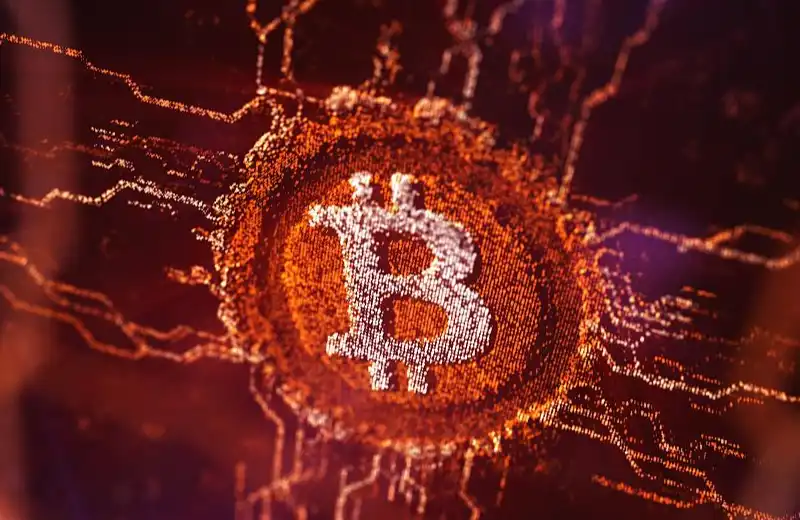5-day countdown, understand the Bitcoin "halving" code hidden in the cycle
Original title: "5-day countdown! Understand the Bitcoin "halving" code hidden in the cycle"
Original author: River, crypto KOL
In 2024, the market has the three most anticipated clear positives this year - spot Bitcoin ETF, Bitcoin halving, and the Federal Reserve's interest rate cut. The first one has already landed and pushed Bitcoin to break through 70,000 US dollars, setting a record high.
Now with the halving approaching, this year's three major positives are about to be realized by more than half, which may have an impact on the new round of market evolution - according to the latest statistics, there are less than 5 days left for the fourth Bitcoin halving, which is expected to be April 20, 2024, when the block reward will drop from 6.25 BTC to 3.125 BTC.
As one of the most important narratives in the crypto industry, "Bitcoin halving" has always been an important stimulus event that the market has great expectations for. Facing the end of a new round of halving cycle, what should we expect in 2024, and what new variables have appeared in the market?

What impact does halving have on the crypto market?
We can briefly understand the basics of Bitcoin halving: Bitcoin's mechanism design determines that the role of miners is extremely important, and it is the cornerstone of maintaining the operation of the entire system transaction. At present, miners' income mainly comes from two parts-block rewards and handling fees.
The block reward starts at 50 bitcoins, and the rule is to halve once every four years. It has been halved three times to 6.25, and the fourth halving will be in 5 days. By 2140, there will be no block reward for Bitcoin;
But the handling fee will always exist, so the income of miners will become very simple in the future, with only handling fee rewards. For this reason, the encryption industry has always been one of the most cyclical industries.
From a historical perspective, each round of halving is a grand event, especially the first halving cycle of Bitcoin, which saw an astonishing increase of dozens of times. Take the latest statistics of "coin price trend before and after halving" as an example:
● 132 days after the first halving (November 28, 2012), BTC's cumulative increase was as high as 2361%, setting a record high.
● One year and five months after the second halving (July 9, 2016) (during which the prosperous ICO wave and the “9.4” incident that interrupted the process were born, so the cycle was longer), BTC’s cumulative increase was as high as 2804%, setting a record high;

However, since the third halving in 2020, due to the significant improvement in the number of industry practitioners, market attention and the perfection of supporting infrastructure, Bitcoin is no longer a niche product limited to the geek circle, and its volume scale is difficult to increase by dozens of times. Therefore, it has only increased by about 7 times compared to the halving node.
To summarize briefly:
● Before the first halving, geeks in the circle were more concerned about the possibility of Bitcoin as electronic cash;
● During the second halving cycle, the focus on Bitcoin shifted to its attribute as a payment tool, which also triggered a series of debates (the subsequent BCH fork was almost the top stream in the circle);
● In the third halving cycle, Bitcoin has become an alternative asset, and paying attention to the layout of traditional institutions and capital has become the main theme;
So although the price change is not as large as the previous two halvings, the popularity of Bitcoin's third halving is unprecedented. At the same time, the overall political and economic environment of the world during Bitcoin's third halving also affected its performance:
Under the influence of macro factors, from March 12 to March 13, two months before the halving on May 11, Bitcoin went from... It started to go down from $7,600, and first fell to $5,500 and fluctuated. Later, it broke through the support point all the way, reaching a minimum of $3,600. The overall market value evaporated $55 billion in an instant, and the entire network was liquidated for more than 20 billion yuan, accurately realizing the "price halving".
However, after the halving in May, DeFi ushered in a new round of bull market cycle in the summer, and Bitcoin also rushed to $60,000, nearly 7 times compared to the halving.

In general, from historical experience, BTC is very likely to start a new bull market cycle within half a year to one year after the halving. The current volume may be difficult to achieve a 10-fold increase, but it is still worth looking forward to surpassing the integer level of $100,000 or even $200,000.
New variables beyond halving
However, at the same time, with Bitcoin having undergone three halvings, the block reward has been reduced to 6.25, and the number of mined blocks has reached more than 19 million, in fact, many situations and many things have reached a new perspective and time to rethink.
Especially, the entire industry and Bitcoin itself have seen some new variables worthy of attention compared to the previous halvings.
Intensified mining arms race
As we all know, the capital in the circle has always liked to collectively gamble on the "halving event". Factors such as growing computing power, new hardware, and the upcoming reward halving will determine the overall growth of the industry and Bitcoin, and this is even more true today:
As of the latest Bitcoin mining difficulty adjustment at block height 836640, the mining difficulty reached 83.13T, almost doubled compared to a year ago.

Against this backdrop, the total network computing power, which has doubled over the past year, and the halving in 10 days have resulted in a sharp drop of 50% in the number of bitcoins that miners can mine, meaning that in order to maintain their own operating cash flow, miners must be forced to increase their computing power investment to mine enough BTC to cover their expenses.
This will further lead to a significant increase in network computing power, and the difficulty of mining will have to be adjusted upward to keep the BTC production rate stable, thereby squeezing out miners with higher costs from the market.
According to a CoinShares research report, when the halving is completed, the average cost of bitcoin production for miners may rise sharply, with a median cost of more than $42,000. However, due to the surge in bitcoin prices in the past two months, the production costs of most miners are currently lower than the market price.

Therefore, it is not ruled out that this halving will be an exception, that is, the total network computing power will grow rapidly at a steeper slope - since the first Bitcoin halving in 2012, and the subsequent halvings in 2016 and 2020, the computing power usually drops by about 9% after the halving, which usually lasts for about six months, followed by a mid-term recovery, and then a surge in activity about a year before the next halving.
This cycle is logical: in order to remain competitive in anticipation of the halving, miners increase capital expenditures, making the computing power significantly above the trend. After the halving, miners' direct income decreases, affecting their capital expenditure cycle.
Miners are essentially engaged in an arms race to purchase and add as many machines as possible, and the impact of the "market price> mining cost" variable on the miner market and the Bitcoin secondary market remains to be seen.
Internal evolution of Bitcoin ecosystem
According to Bitcoin's halving rules, the block reward starts at 50 Bitcoins, and the rule is to halve once every four years. It has been halved three times and is now 6.25. If it continues to halve, there will be no block reward for Bitcoin in 2140;
And the handling fee will always exist, so with rounds of halving, the block reward will gradually decrease or even approach zero, and the income of miners in the future will become very simple, with only handling fee rewards.
Since 2023, the prosperity of the Bitcoin ecosystem, especially BRC20, has set off a new wave of "BitcoinFi", and the activity of internal transactions in the Bitcoin ecosystem has reached a new peak, thereby boosting the surge in Bitcoin's handling fee income - currently, the total market value of the three new assets ORDI, SATS, and RATS alone is nearly US$3 billion, and the total number of holding addresses exceeds 90,000.

This wave of Ordinals has introduced a huge amount of funds, users, and developers into the Bitcoin ecosystem through the channel of inscriptions: if Bitcoin only had the advantages of "orthodox cognition" and total market value before, the inscription wave has directly and significantly increased the richness of new assets in the Bitcoin ecosystem. Human demand for new assets is eternal, and it has also indirectly increased the number of developers and user base.
Against this background, protocol innovations such as Ordinals, accompanied by the conquest of leading projects such as ORDI and SATS, have deeply affected the fee model of the Bitcoin network - the most direct way is to completely change the economic model and incentive model of Bitcoin.
The latest data shows that the current proportion of Ordinals transactions in the total transactions on the Bitcoin chain has basically stabilized at more than 50%, starting from 0 at the beginning of 2023.

This also helped push BTC mining fee income to a new high in the past five years. It should be noted that the historical average data of miners' fee income often accounted for only about 2%, and it was as high as 40% at the end of last year (it has fallen back in the past three months).
As subsequent block rewards gradually decrease until they approach zero, the importance of fees will become higher and higher until they eventually become the only source of income.

So this round of BRC20 is equivalent to a preview in advance. Regardless of whether it is successful in the future, with the subsequent Bitcoin halving, the variables on this road are bound to profoundly change the overall fee model of Bitcoin.
Summary
In general, we are now at the end of a new round of halving cycle. This may be the first (or second) Bitcoin halving "event" witnessed and experienced by most practitioners and investors in this round.
All that has passed is a prologue. As one of the most important narratives in the crypto industry, "Bitcoin halving" has always been a good medicine to boost market confidence. Now that the bull's footsteps are close, it is still unknown how Bitcoin and this cycle will go after the halving.
This article comes from a contribution and does not represent the views of BlockBeats.
Welcome to join the official BlockBeats community:
Telegram Subscription Group: https://t.me/theblockbeats
Telegram Discussion Group: https://t.me/BlockBeats_App
Official Twitter Account: https://twitter.com/BlockBeatsAsia


 Forum
Forum Finance
Finance
 Specials
Specials
 On-chain Eco
On-chain Eco
 Entry
Entry
 Podcasts
Podcasts
 Activities
Activities
 OPRR
OPRR






